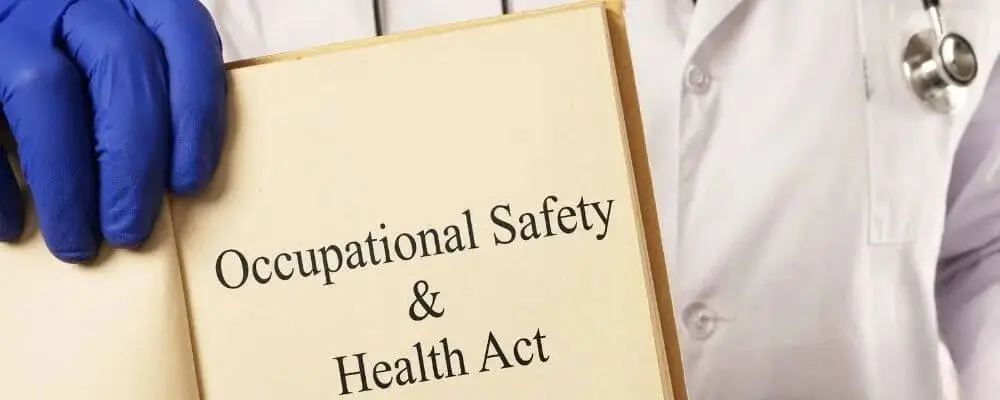What Is OHS Meaning?
When it comes to workplace safety, understanding the OHS meaning is essential. OHS, an abbreviation for Occupational Health and Safety, refers to the practices and protocols aimed at safeguarding the well-being of employees in their work environments. It encompasses a comprehensive approach to identifying and mitigating workplace hazards, promoting healthy work practices, and preventing occupational injuries and illnesses.
By prioritizing OHS, organizations ensure the protection of their workforce and create a safe and conducive working environment. This article will delve deeper into the OHS meaning, its significance, and the key aspects involved in maintaining occupational health and safety standards.

The Occupational Safety and Health Act
The Occupational Safety and Health Act (OSHA) is a significant piece of legislation enacted in the United States to protect the health and safety of workers. Signed into law in 1970, OSHA establishes the rights and responsibilities of employers and employees and sets workplace safety standards and regulations. The primary objective of the Occupational Safety and Health Act is to ensure that employers provide a safe and healthy work environment for their employees. It strongly emphasizes preventing workplace accidents, injuries, and illnesses through proactive measures such as hazard identification, employee training, and the implementation of safety protocols.
OSHA also establishes enforcement procedures and penalties for non-compliance, aiming to create a culture of safety and accountability in the American workforce. The Act covers a wide range of industries and workplaces, promoting the well-being of millions of workers nationwide. By prioritizing occupational safety and health, OSHA plays a vital role in reducing workplace hazards and protecting the welfare of employees.
How to Stay Safe on the Job
When it comes to the workplace, safety should always be a top priority. Whether you work in an office, a construction site, or any other environment, taking proactive measures to stay safe on the job is crucial. Following proper safety practices and being aware of potential hazards can significantly reduce the risk of accidents and injuries. Here are some important guidelines to help you stay safe and protect your well-being while on the job:
Know the Hazards
Familiarize yourself with the specific hazards present in your workplace. Whether it’s machinery, chemicals, or even ergonomic risks, understanding the potential dangers allows you to be better prepared and take necessary precautions.

Follow Safety Procedures
Always adhere to the established safety procedures and protocols. These guidelines are in place to protect you and others in the workplace. Whether wearing personal protective equipment (PPE), using safety guards on equipment, or following proper lifting techniques, follow the recommended practices.
Take Breaks and Manage Fatigue
Fatigue can impair judgment and reaction time, increasing the risk of accidents. Take regular breaks and manage your workload effectively to avoid exhaustion. Prioritize getting enough sleep and maintaining a healthy work-life balance.
Report Hazards and Incidents
If you encounter any hazards or witness an incident, immediately report it to your supervisor or the appropriate authority. Timely reporting ensures necessary actions are taken to address the issue and prevent future occurrences.
Maintain a Clutter-Free Workspace
Keep your work area clean and free of clutter. Remove any obstructions that could pose a tripping or slipping hazard. This includes ensuring proper storage of tools and materials.
Practice Good Ergonomics
Practicing good ergonomics is crucial whether you sit at a desk or perform physical labor. Maintain proper posture, adjust your workstation to be ergonomically friendly, and take regular breaks to stretch and avoid strain.
Stay Informed and Trained
Attend safety training sessions and stay updated on safety guidelines specific to your industry. Stay informed about any new procedures, equipment, or hazards that may arise in your workplace.
Use Equipment Properly
Be knowledgeable about the correct usage of equipment and tools. Read and follow the instructions, receive proper training if needed, and never take shortcuts that compromise safety.
Be Mindful of Your Surroundings
Pay attention to your surroundings and be aware of potential hazards. This includes being cautious of moving vehicles, slippery surfaces, falling objects, or any other risks that may be present in your work environment.

Occupational Health and Safety as a Discipline
Occupational Health and Safety (OHS) is a critical aspect of workplace management and a distinct discipline dedicated to promoting and ensuring the health, safety, and well-being of individuals in the workplace. As a field of study, OHS combines scientific knowledge, regulatory compliance, and practical applications to create safe and healthy work environments.
Occupational Health and Safety as a discipline is continuously evolving to address emerging workplace challenges and incorporate advancements in technology and scientific research. OHS professionals are instrumental in creating a safety culture where employees’ well-being is prioritized and the risk of occupational injuries and illnesses is minimized.
By leveraging their expertise, OHS practitioners contribute to organizations’ overall success by reducing accidents’ associated costs, improving productivity, and enhancing employee satisfaction. They play a vital role in ensuring that workplaces are safe, healthy, and conducive to the well-being of everyone involved.

Importance of Occupational Health and Safety
Occupational Health and Safety (OHS) is important for the workplace due to the following reasons:
- Employee protection and well-being
- Reduced workplace accidents and injuries
- Improved productivity and efficiency
- Legal compliance and risk management
- Positive organizational culture
- Enhanced employee recruitment and retention
- Brand reputation and stakeholder confidence
- Continuous improvement and innovation
